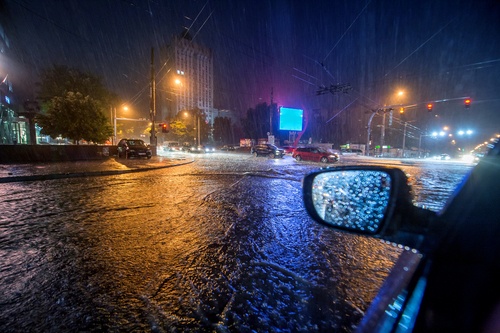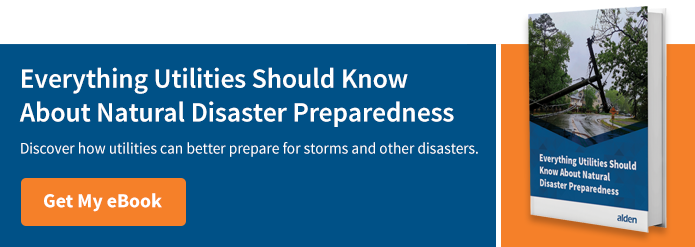Assessing Natural Disaster Risk for Utility Infrastructure Management
 For joint use asset owners that are already stretched thin managing their plant, the trend of more frequent and more powerful natural disasters is a threat. If climate scientists are correct, events like the hurricanes and wildfires that have plagued the U.S. in the past can be expected to occur more often, with even more devastating results.
For joint use asset owners that are already stretched thin managing their plant, the trend of more frequent and more powerful natural disasters is a threat. If climate scientists are correct, events like the hurricanes and wildfires that have plagued the U.S. in the past can be expected to occur more often, with even more devastating results.
The physical damage to power and communications infrastructure will cause even further strain.
Our Infrastructure is Vulnerable
Florida Power and Light’s work on strengthening power lines and updating technology may have minimized the damage from Irma and likely helped speed recovery efforts by allowing the company to automatically reroute power and address about 1.5 million outages.
While some aspects of the U.S. power and communications grids’ distribution systems are underground, that option is neither affordable nor accessible in all areas. In Florida, the risks of storm surge and seawater incursion make it impractical to run lines beneath the surface in some areas.
The fact is, no matter how well the industry is prepared, “hurricanes, earthquakes, storms, and other natural and man-made disasters can cause significant damage to the energy grid, creating widespread power outages,” according to EEI.org.
The Insurance Journal states that the combination of higher average global temperatures, more destructive storms and hurricanes, and increased risk of wildfire will “ultimately worsen risk for utilities.” The publication also noted that the U.S. insurance industry has identified a “$20 to $55 billion annual financial loss from power outages caused by flooding, hurricanes, and extreme temperatures.”
Recovery: Utilities Rally to Get Customers Back Up
- Hurricane Sandy (2012): 8.2 million people without power across 24 states along the east coast
- Hurricane Wilma (2005): 3.2 million people lost power in Florida
- Hurricane Katrina (2005): 2.6 million people lost power across the U.S.
- Hurricane Andrew (1992): 1.4 million outages
The restoration and rebuilding process begins by ensuring that power is no longer flowing through downed lines, and then proceeds based on a series of established priorities. Damage is first repaired to power plants, transmission lines and substations. Then, critical facilities such as hospitals and water treatment plants are restored, followed by supermarkets, gas stations, and other important community services.
An efficient restoration process requires sufficient logistical expertise, skilled workers, and specialized equipment. In the case of a massive outage or event, no single utility can manage the response on their own.
Getting Help from Mutual Aid Agreements
This swell of support is possible because of the power of mutual aid agreements. These agreements exist to organize the rapid sharing of emergency aid and resources before, during and after an emergency event. The agreements may be formal or informal, and can include the sharing of personnel, equipment, and supplies.
Many mutual aid agreements exist between individual or groups of companies and organizations. For example, Edison Electric Institute represents U.S. investor-owned electric companies and maintains a mutual aid program that is a voluntary partnership of electric companies nationwide to help each other restore power efficiently.
The problem is that many mutual aid agreements are informal “handshake” agreements: a company knows which other companies it can count on in an emergency situation. However, the absence of a formal agreement or data regarding how many skilled linemen are available at a particular time can make response preparations chaotic and time-consuming – during a time when every second counts.
To continue the discussion, click here to read about mutual aid agreements, where we discuss how they work, and some of the fundamental problems that exist. Later, we will dive into suggestions for improving these agreements and the response to emergency events that help improve the restoration process for utilities and their customers.
If you need help storm-hardening your plant, reach out to one of our specialists to learn how Alden can help. Simply click here to get started.
